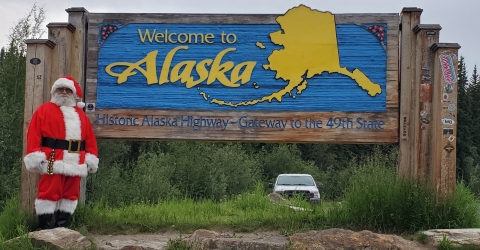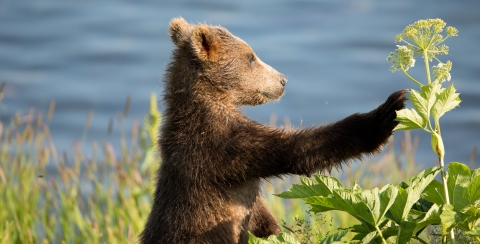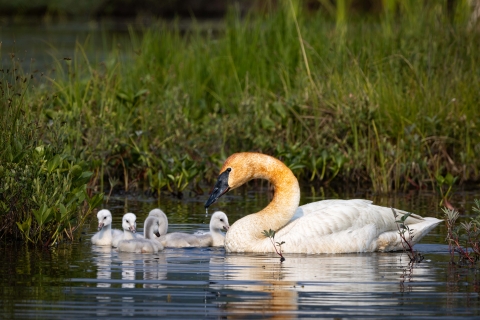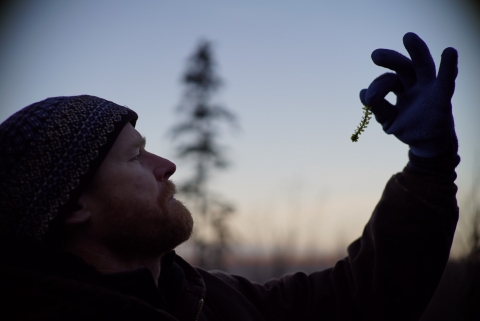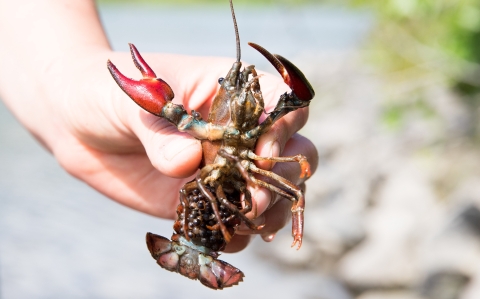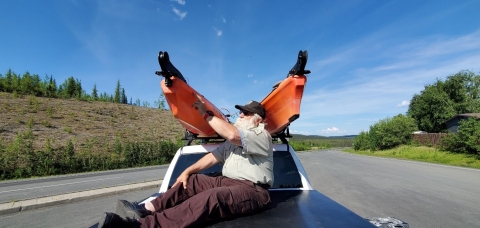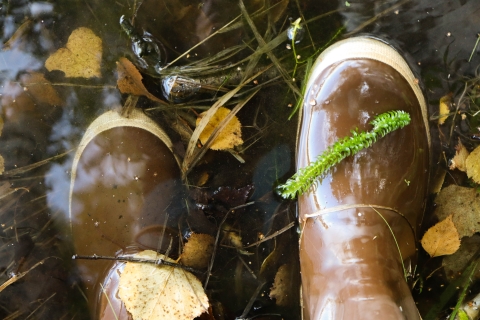During the winter holiday season, Santa Claus uses the "naughty and nice list" to sort people based on their behavior in the community. This isn’t all that different from managing invasive species invasive species
An invasive species is any plant or animal that has spread or been introduced into a new area where they are, or could, cause harm to the environment, economy, or human, animal, or plant health. Their unwelcome presence can destroy ecosystems and cost millions of dollars.
Learn more about invasive species , where the "nice" species are native and beneficial, and the "naughty" species are invasive and disruptive. Just as Santa carefully monitors his list, natural resource managers in Alaska track and manage species to ensure the health of the state’s ecosystems.
The "Nice" List: Native Species in Alaska
In Santa’s world, the "nice" list is reserved for those who behave well and contribute positively to the community —much like Alaska’s native species. These species are adapted to Alaska’s landscapes and climate over centuries, forming the unique ecosystems across the state. Native species play essential roles in maintaining ecological balance. For example, native fish species, like the five species of Pacific salmon, are important food sources for wildlife and humans alike. Native plant species, such as fireweed, can help stabilized burned and logged soil from eroding. Native birds, such as hummingbirds, and insects, such as flower flies, are important pollinators across the landscape. Even the larger predators, such as brown bears, provide important nutrient redistribution, depositing berry seeds across the landscape and consuming spawning salmon.
Here are some timely tales about Alaska’s nice native species:
- Salmon
- Brown bears
- Trumpeter swan
- Tufted puffin
- Fireweed
- Caribou
- Sheefish
- Alaska Blackfish
- Flower flies
- Hummingbirds
These species are integral to maintaining biodiversity and ecological harmony in Alaska, much like the children on Santa’s "nice" list who contribute positively to their communities. They help sustain a healthy environment for both humans and wildlife alike.
The "Naughty" List: Invasive Species in Alaska
In contrast, the "naughty" list in Alaska’s ecosystems consists of invasive species—non-native organisms that threaten native wildlife and disrupt ecological processes. Just as Santa keeps track of children who misbehave, Alaska’s invasive species professionals track species that harm the environment, economy, or human health. These non-native species can include plants and animals from marine, freshwater, and terrestrial environments. They have the potential to outcompete native species, introduce diseases, or prey on native wildlife.
Here are some timely tales about Alaska’s naughty invasive species:
- Elodea
- Invasive green crab
- Norway rat
- Chokecherry/birdcherry
- Signal crayfish
- White sweetclover
- Goldfish
Zebra mussels *not known in Alaska
Just like those on Santa’s “naughty list,” these invasive species need to be monitored and denied rewards to curtail negative impacts.
Watercraft Inspection Stations: Preventing the Spread of "Naughty" Species
One of the most important tools in managing aquatic invasive species is watercraft inspection and decontamination stations. Watercraft can carry invasive species from one waterbody to another, spreading them into or across the state. Tiny organisms like zebra mussels or fragments of plants, like Elodea, can hitch a ride on boats, trailers, or fishing gear, causing ecological damage when they establish in new environments.
Just like Santa checks his list to to reward only good children , watercraft inspectors check boats to ensure they are free of potentially invasive species before entering Alaska. Inspectors at the Alaska-Canada Highway Land Port of Entry (the only watercraft inspection and decontamination station in the state!) examine boats, trailers, and equipment for any signs of contamination. They make sure that vessels are cleaned, drained, and dried to prevent the spread of invasive species.
These inspectors play a role similar to Santa’s, preventing problems before they start. Every year large volumes of watercraft enter Alaska from states and provinces infested with invasive mussels. Despite this, Alaska is one of five western states to remain free of infestation by zebra, quagga and golden mussels! From May to August 2024, watercraft inspectors examined 888 boats, trailers, and other associated gear. They ensure that only clean boats enter Alaska, protecting the environment from the harmful impact of invasive species.
Plus, it helps the Santa metaphor when there’s a watercraft inspector, Steve Wogtech, who spends his off season donning the suit and hat as Santa!
Shared Vigilance
Managing invasive species in Alaska is an important task that requires ongoing surveillance, much like making a list and checking it twice. But instead of relying on only one person to make the list, everyone can share in the vigilance to prevent the “naughty” species from spreading.
Three simple steps that everyone can take include:
- Clean gear after each use
- Know what to be on the lookout for
- Report any sightings of invasive species
- Call 1-877-INVASIV (1-877-468-2748)
- Use Alaska Department of Fish and Game Online Invasive Species Reporter


